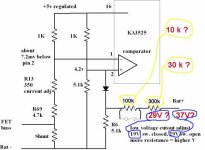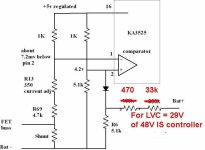On the high power FETs, it's usually not a problem. It can REALLY screw up a sensitive op-amp circuit though. I scrape off the big chunks with a small screwdriver, then spray it with flux remover. Rubbing alcohol and an old toothbrush sort of works too.
The flux residue tends to become more conductive with humidity as it absorbs moisture from the air.
The flux residue tends to become more conductive with humidity as it absorbs moisture from the air.



